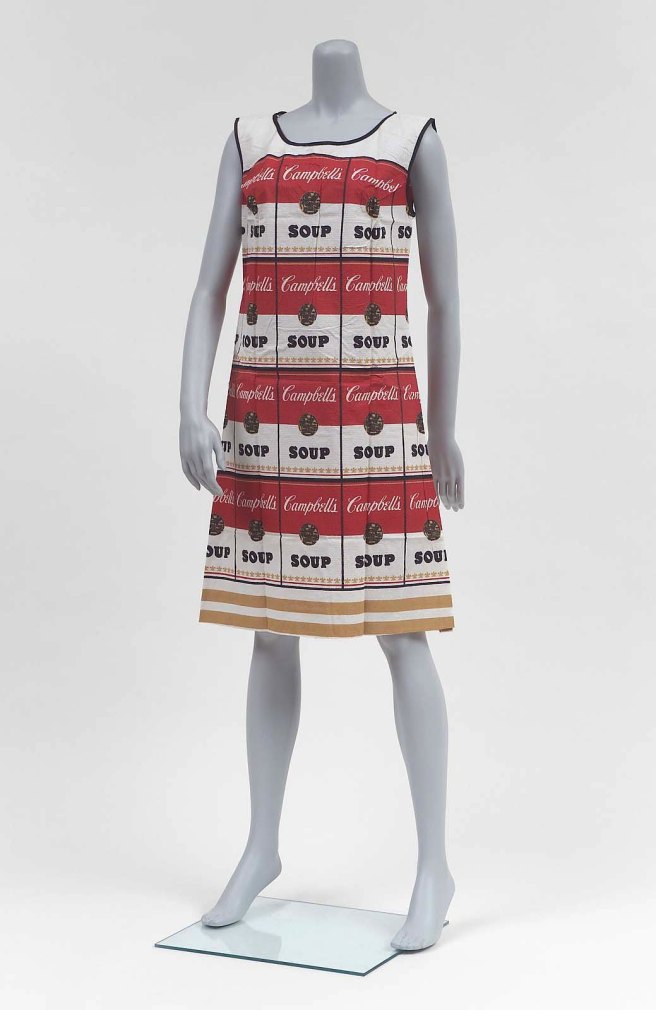
During the 1960s—a time of societal flux and distinguished by many short-lived fashion trends and fads—this dress, inspired by Andy Warhol’s iconic work Campbell’s Soup Cans, was mass produced as part of a fashion phenomenon gone viral: the disposable dress.

It all started with a marketing promotion by Scott Paper, an American company that produced toilet tissue, baby wipes, napkins, paper towels and other products. Scott marketed two styles of sleeveless shift dresses made with a new non-woven cellulose based material called Dura-Weve. For the cost of $1.00 + 25 cents for shipping and handling, along with a coupon clipping, anyone could receive a paper dress in the mail. Within eight months, Scott sold 500,000 dresses and soon other companies and designers jumped on the “throwaway” fashion train.

The March 17, 1967 issue of TIME Magazine printed Fashion: Real Live Paper Dolls with a running list of designers and manufacturers responding to the high demand for paper fashion with their own expressive lines. Many styles were made to encourage creative alterations and embellishments, easily achieved with a pair of scissors and glue. At an extremely reasonable price, anywhere from $1.00 for a simple A-line dress, to $15.00 for a bridal gown, disposable paper fashion was all the rage. By 1968, changes in fashion and an increasing awareness of environmental impact led to the obsolescence of yet another fashion trend.
Click for description and collection data on mfa.org
Objects in Brief is a randomized showcase of the MFA, Boston’s encyclopedic Textile and Fashion Arts collections. A featured object is indicative of the author’s curiosity and chosen so she may learn about its material and structural properties, function, history, and greater story. These “quick studies” have led to more in-depth explorations posted in A Closer Look.
